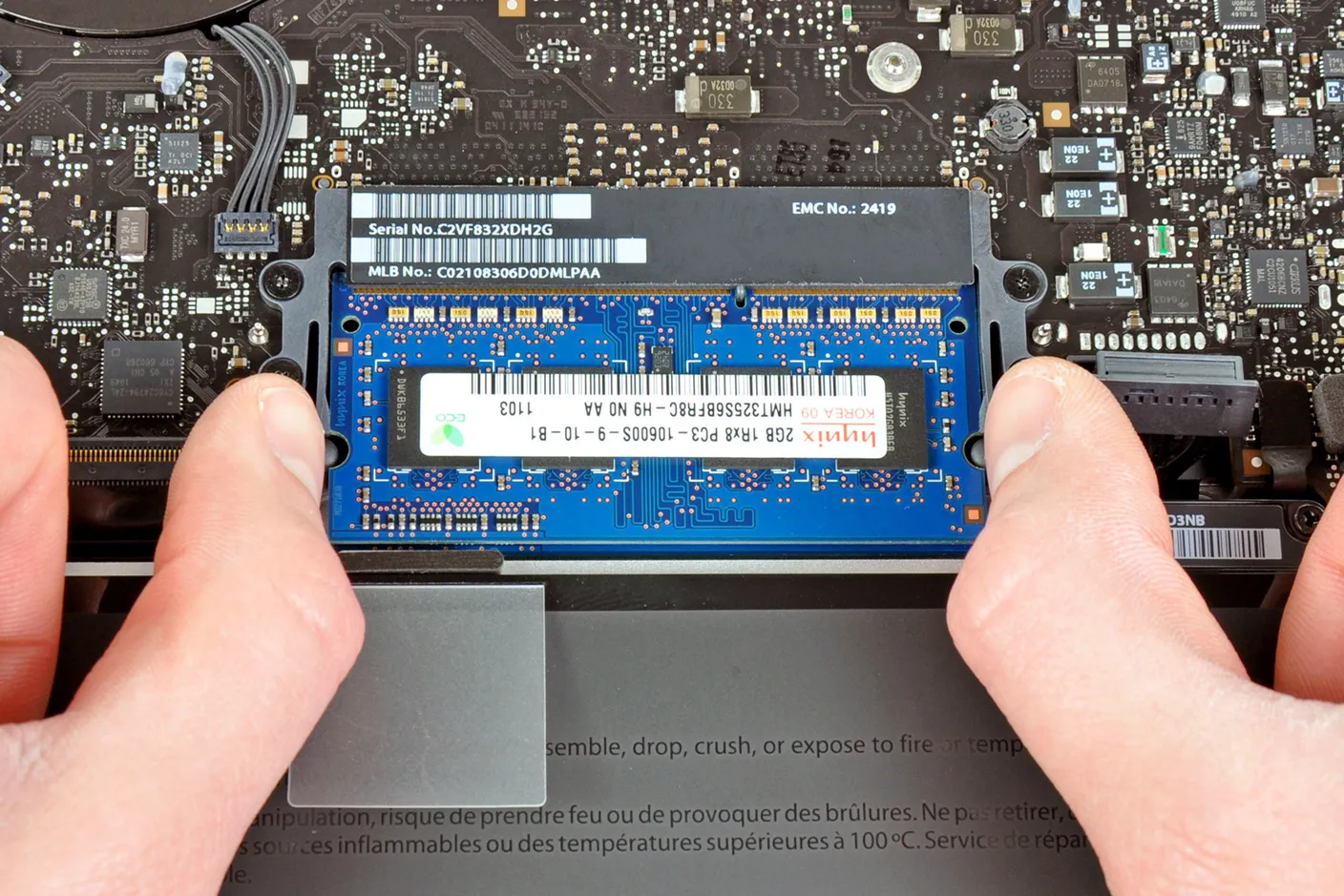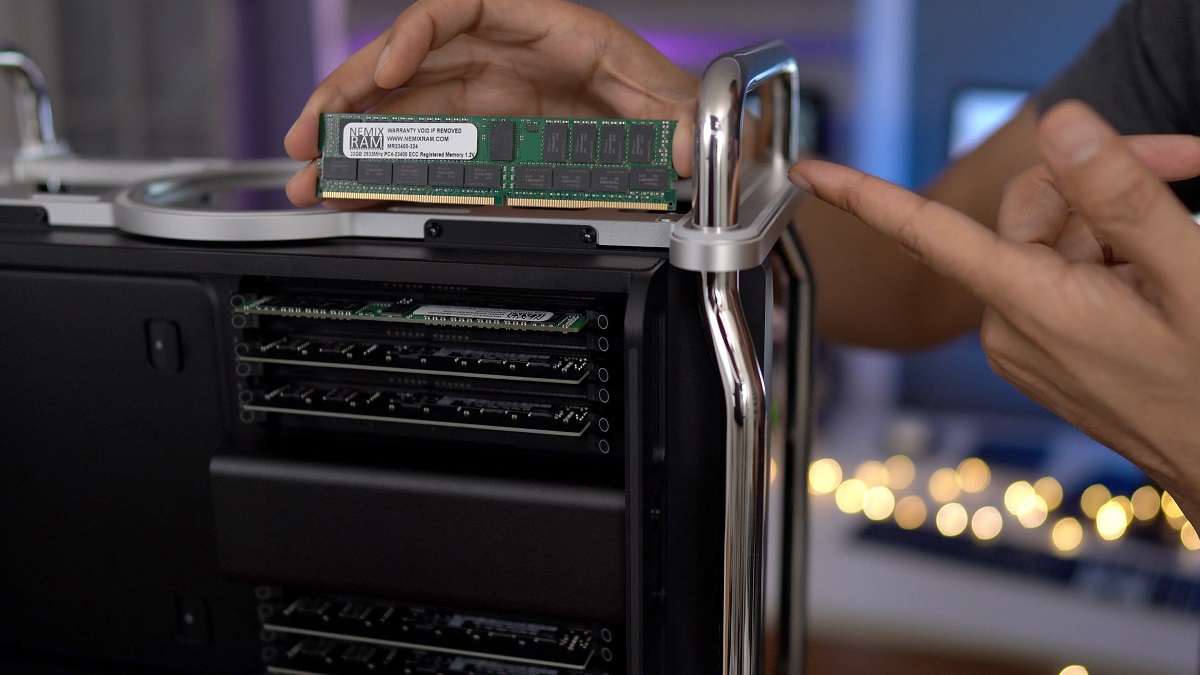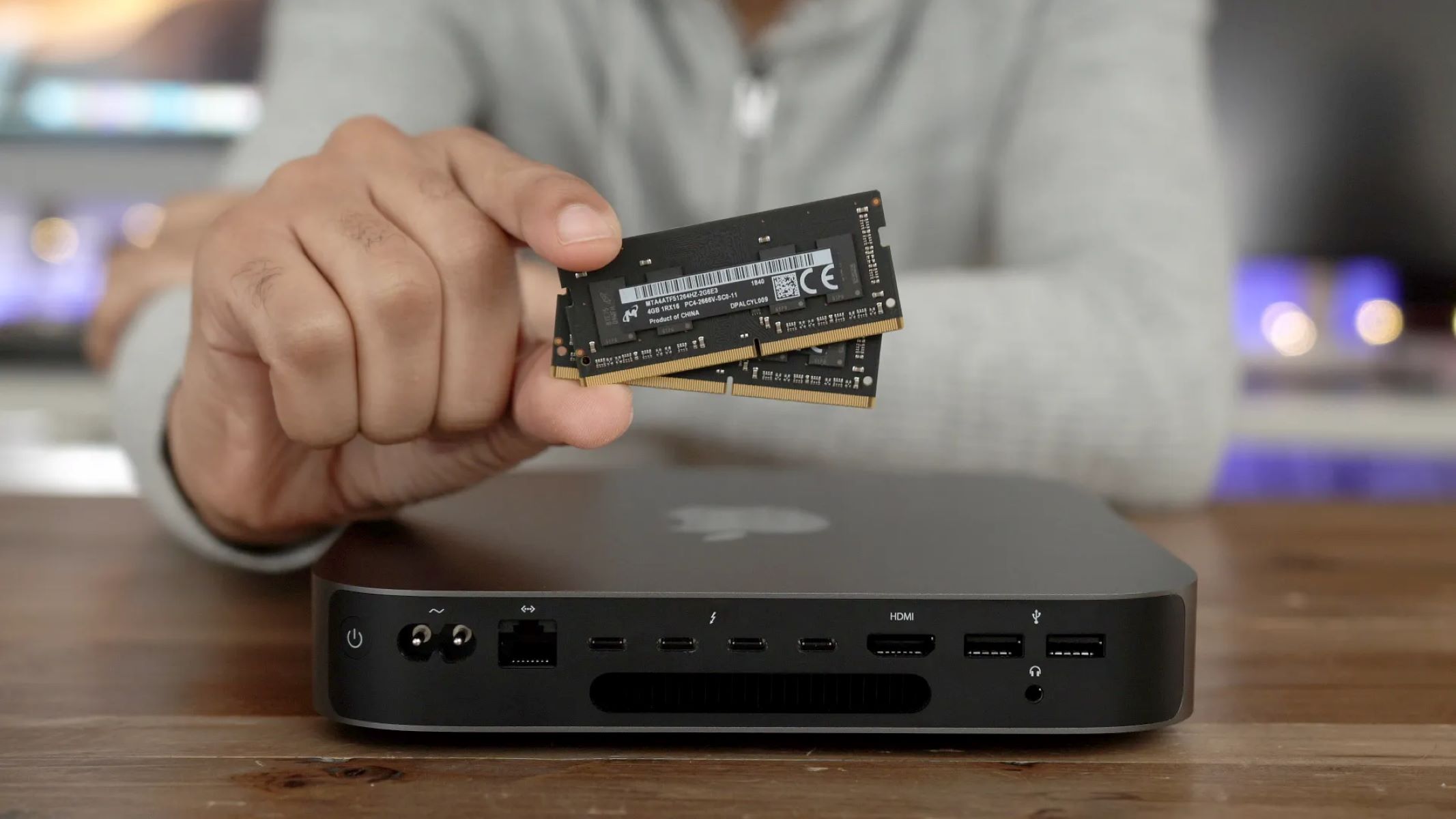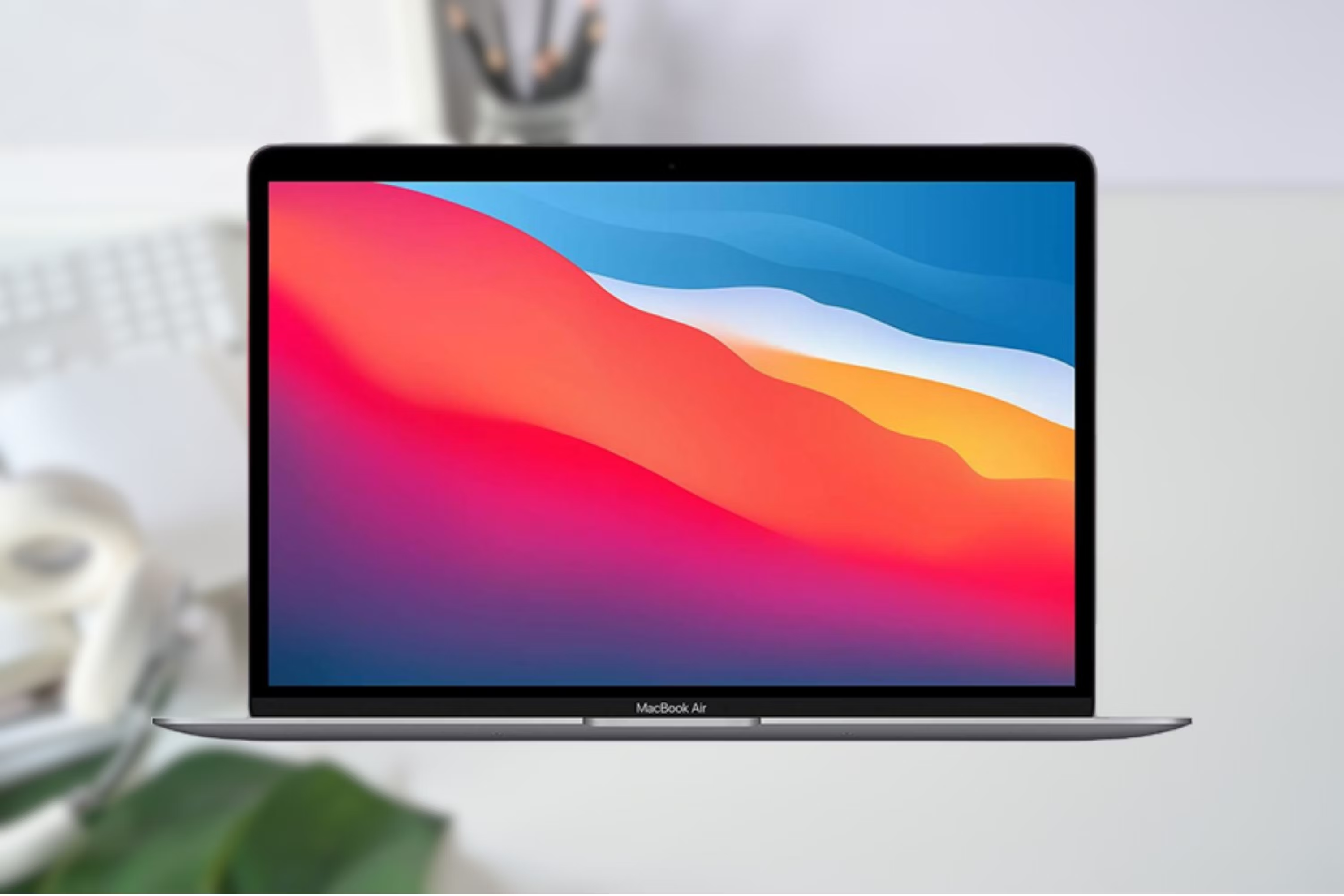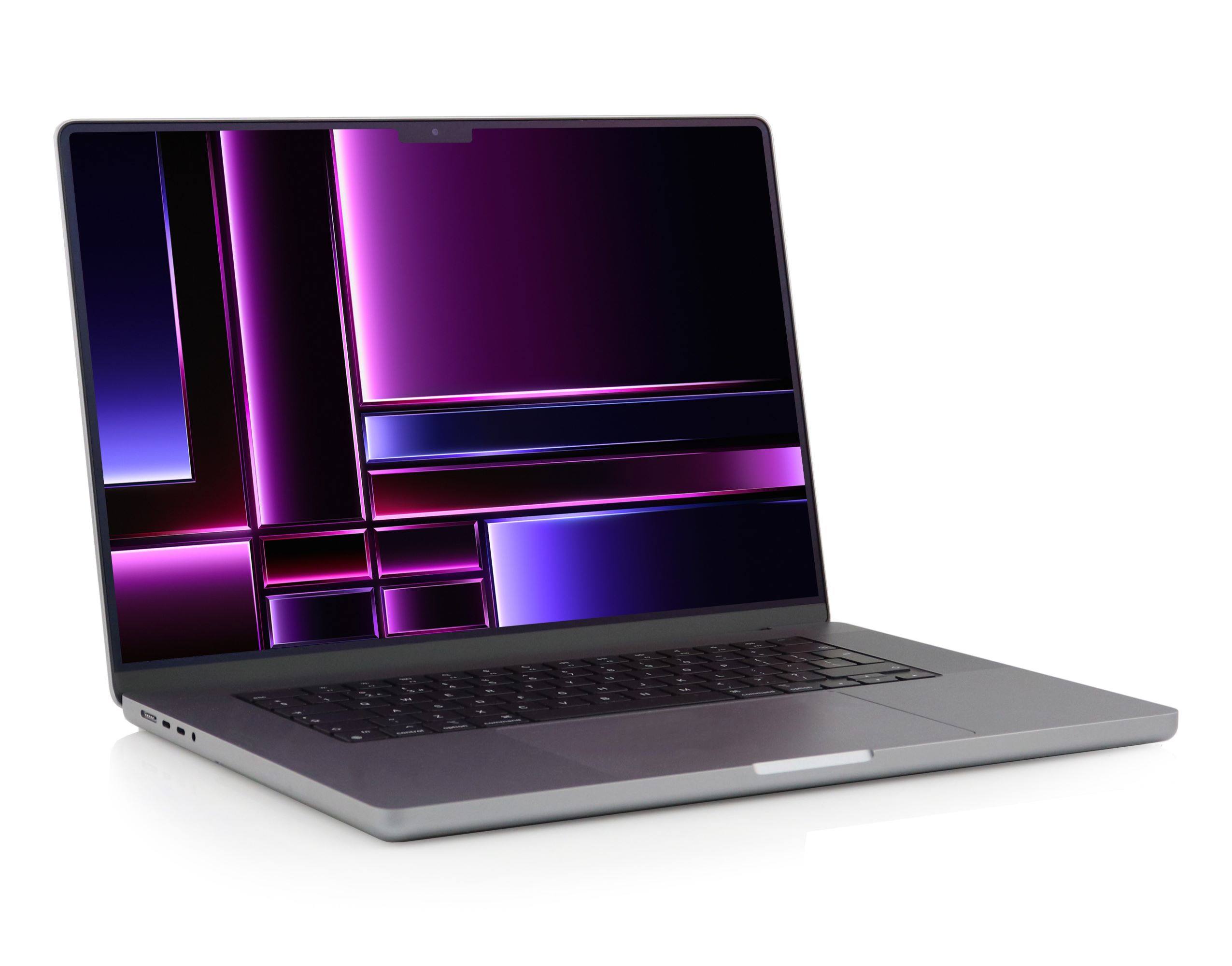Introduction
Welcome to our guide on the type of RAM used in the MacBook Pro! If you’re a MacBook Pro user or considering purchasing one, understanding the different types of RAM available and their compatibility is crucial. RAM (Random Access Memory) is an essential component of a computer system that temporarily stores data and instructions being actively used by the CPU.
Having sufficient and compatible RAM is essential for optimal performance, multitasking capabilities, and handling resource-intensive tasks such as video editing, graphic design, or running virtual machines. In this guide, we will explore the RAM requirements that MacBook Pro users should be aware of and the available options for upgrading their system’s memory.
Before delving into the specifics of MacBook Pro RAM, let’s have a brief overview of RAM and its significance. RAM serves as a bridge between the CPU and the storage devices, providing fast and temporary storage for data and instructions that the CPU needs to access quickly. Unlike a computer’s hard drive or SSD, which provide long-term storage, RAM allows for rapid data retrieval, ensuring smooth and efficient operation of applications on your MacBook Pro.
The MacBook Pro is a powerful and versatile laptop used by professionals in various fields, including creative work, software development, and business. Apple provides a range of MacBook Pro models, each with its own RAM requirements and capabilities. It’s essential to understand the specific type of RAM supported by your MacBook Pro model to ensure compatibility and avoid any issues when upgrading or replacing the memory modules.
In the following sections, we’ll explore the different types of RAM used in MacBook Pro, including DDR3 and DDR4, and discuss the RAM speed and capacity considerations. Additionally, we’ll provide guidance on how to check your MacBook Pro’s current RAM configuration and discuss the options for upgrading your RAM to enhance performance.
Overview of RAM
RAM, which stands for Random Access Memory, is a crucial component of any computer system, including the MacBook Pro. It serves as a temporary storage area where the CPU can quickly access data and instructions that are actively being used. RAM plays a significant role in the overall performance and multitasking capabilities of a system.
When you open an application or run a program on your MacBook Pro, the necessary files and data are loaded into RAM. This allows the CPU to access them quickly, resulting in faster execution times and smoother overall performance. More RAM enables your computer to handle resource-intensive tasks, such as running multiple applications simultaneously or working with large media files.
RAM operates at a much higher speed compared to other storage devices like hard drives or solid-state drives (SSDs). While hard drives and SSDs provide long-term storage for files and programs, RAM offers near-instant data retrieval and versatility.
Think of RAM as a workspace where the CPU can place data that it needs to work on. The larger the workspace (RAM capacity), the more data can be stored, allowing the CPU to access it quickly. RAM is volatile memory, meaning its contents are erased when the computer is shut down or restarted. Therefore, any data and files you are working on will need to be saved to long-term storage if you want to access them later.
The performance of your MacBook Pro depends not only on the amount of RAM installed but also on the type and speed of the memory. Understanding the different types of RAM available for your MacBook Pro is crucial for making informed decisions about upgrading or expanding your system’s memory capacity.
Now that we have a basic understanding of RAM and its importance in computer systems, let’s explore the specific RAM requirements and options available for MacBook Pro models.
RAM Requirements for MacBook Pro
MacBook Pro models have specific RAM requirements that vary depending on the year and model you own or are considering purchasing. It’s important to be aware of these requirements to ensure compatibility and optimal performance. Here are some key factors to consider when it comes to RAM requirements for the MacBook Pro:
1. Supported RAM Types: MacBook Pro models primarily support two types of RAM: DDR3 and DDR4. DDR3 RAM is the older standard, while DDR4 RAM is newer and offers higher performance. The type of RAM your MacBook Pro supports depends on the model and release year. It’s essential to check the technical specifications of your MacBook Pro to determine which type of RAM is compatible.
2. RAM Capacity: MacBook Pro models generally support a range of RAM capacities. It’s crucial to determine the maximum amount of RAM your MacBook Pro can accommodate. This information can be found in the technical specifications provided by Apple. Upgrading your RAM to the maximum supported capacity can significantly enhance your MacBook Pro’s performance, especially when running memory-intensive applications or multitasking.
3. RAM Configuration: MacBook Pro models may have different RAM configurations, such as single-channel or dual-channel memory. Single-channel memory uses a single RAM module, while dual-channel memory utilizes two or more RAM modules for increased performance. It’s important to be aware of your MacBook Pro’s RAM configuration to optimize RAM performance and minimize potential bottlenecks.
4. Speed and Latency: RAM speed and latency also play a role in overall performance. The speed of RAM is measured in megahertz (MHz), and the lower the latency, the faster the RAM can respond to requests. MacBook Pro models have specific speed and latency requirements, and it’s advisable to match these specifications when upgrading or replacing RAM modules.
When considering upgrading or replacing RAM on your MacBook Pro, it’s recommended to consult Apple’s official documentation or contact their support for detailed information on the specific RAM requirements for your model. This will ensure that you choose the right RAM modules that are compatible with your MacBook Pro and provide the best performance improvements.
Now that we have explored the RAM requirements for MacBook Pro models let’s delve deeper into the different types of RAM used in these laptops – DDR3 and DDR4.
DDR3 RAM
DDR3 RAM, or Double Data Rate 3 Synchronous Dynamic Random Access Memory, is the older type of RAM used in MacBook Pro models released before 2016. It is also widely used in many other computer systems and offers reliable performance for various tasks.
Key characteristics of DDR3 RAM include:
- Compatibility: DDR3 RAM is compatible with MacBook Pro models released between 2009 and 2015. It is important to check the specific MacBook Pro model’s technical specifications to ensure compatibility.
- Speed and Performance: DDR3 RAM operates at different speeds, such as 1333MHz or 1600MHz, depending on the specific MacBook Pro model. Higher speed RAM modules offer faster data transfer rates, which can improve overall system performance, especially when running memory-intensive applications or multitasking.
- Capacity: MacBook Pro models with DDR3 memory typically support a maximum RAM capacity ranging from 8GB to 16GB, depending on the specific model. Upgrading to the maximum supported capacity can provide a noticeable improvement in performance.
- Availability: DDR3 RAM modules are widely available and can be purchased from reputable retailers or online stores. Ensure that you choose reputable brands and modules that are compatible with your MacBook Pro model to maintain optimal performance and compatibility.
While DDR3 RAM is older technology, it continues to provide reliable performance for many MacBook Pro users. Upgrading to DDR3 RAM, especially if your MacBook Pro currently has a lower capacity or slower speed RAM, can offer a significant performance boost for day-to-day tasks and resource-intensive applications.
However, it’s worth mentioning that newer MacBook Pro models released after 2016 have transitioned to using DDR4 RAM, which offers improved performance and efficiency compared to DDR3. If you have one of these newer models, you will need to look for DDR4 RAM modules for any RAM upgrades or replacements.
Now that we have explored DDR3 RAM, let’s move on to discussing the benefits and characteristics of DDR4 RAM, which is used in more recent MacBook Pro models.
DDR4 RAM
DDR4 RAM, also known as Double Data Rate 4 Synchronous Dynamic Random Access Memory, is the newer and faster type of RAM used in MacBook Pro models released after 2016. It offers improved performance and efficiency compared to its predecessor, DDR3 RAM.
Here are the key features of DDR4 RAM:
- Compatibility: DDR4 RAM is compatible with MacBook Pro models released from 2016 onwards. It is essential to check your MacBook Pro’s specific model to ensure compatibility with DDR4 RAM.
- Increased Speed and Bandwidth: DDR4 RAM operates at higher speeds, ranging from 2133MHz to 3200MHz, depending on the MacBook Pro model. The increased speed allows for faster data transfer and improved overall system performance.
- Improved Energy Efficiency: DDR4 RAM requires lower operating voltage compared to DDR3 RAM, resulting in improved energy efficiency. This can contribute to longer battery life for MacBook Pro users.
- Higher Capacities: MacBook Pro models with DDR4 RAM support higher maximum RAM capacities compared to DDR3 models. It is common to find MacBook Pro models that support up to 32GB or even 64GB of DDR4 RAM, allowing for smoother multitasking and handling memory-intensive tasks.
- Availability: DDR4 RAM modules are widely available in the market. Ensure that you choose reputable brands and modules that are compatible with your MacBook Pro model to ensure optimal performance and compatibility.
Upgrading your MacBook Pro to DDR4 RAM can offer significant performance improvements, especially if you are running resource-intensive applications or engaging in tasks that require extensive multitasking. The increased speed, bandwidth, and capacity of DDR4 RAM modules can enhance overall system responsiveness and provide a smoother user experience.
It’s important to note that while DDR4 RAM offers improved performance over DDR3, it is only compatible with MacBook Pro models that specifically support DDR4 technology. If you own an older MacBook Pro model with DDR3 RAM, you will not be able to upgrade to DDR4 RAM.
Now that we have explored DDR4 RAM and its benefits, let’s move on to discussing the importance of RAM speed and capacity for MacBook Pro models.
RAM Speed and Capacity for MacBook Pro
The speed and capacity of RAM play a crucial role in the performance and multitasking capabilities of your MacBook Pro. Understanding these factors will help you make informed decisions when upgrading or replacing the memory modules in your laptop.
RAM Speed: The speed of RAM is measured in megahertz (MHz) and determines how quickly data can be transferred to and from the memory module. Higher RAM speeds offer faster data access and can improve overall system responsiveness, especially when running memory-intensive applications or multitasking. MacBook Pro models come with specific speed requirements, such as 1866MHz, 2133MHz, or even higher. It’s important to match the required RAM speed for optimal performance.
RAM Capacity: The capacity of RAM refers to the amount of memory your MacBook Pro can support. Higher RAM capacity allows for more data to be stored in memory, reducing the reliance on virtual memory and enhancing multitasking capabilities. MacBook Pro models typically support a range of RAM capacities, starting from 8GB and going up to 32GB or even 64GB, depending on the specific model. Consider the types of applications you use and the intensity of your workload to determine the appropriate RAM capacity for your needs.
It’s important to mention that MacBook Pro models have specific limitations when it comes to RAM speed and capacity. Ensure that you consult the technical specifications for your MacBook model to determine the maximum supported RAM speed and capacity. Exceeding these limits may result in compatibility issues or reduced performance.
When upgrading RAM in your MacBook Pro, it’s generally recommended to match or exceed the existing RAM speed and capacity to maintain optimal performance. Adding more RAM or using faster modules can significantly enhance multitasking capabilities, improve application responsiveness, and reduce the occurrence of slowdowns or system freezes.
However, it’s essential to consider your specific needs and budget when determining the ideal RAM speed and capacity for your MacBook Pro. Assess the types of applications you use, the complexity of your work, and your multitasking requirements to strike the right balance between performance and cost.
Now that we’ve explored RAM speed and capacity considerations for MacBook Pro, let’s move on to discussing how you can check the current RAM configuration on your MacBook Pro.
Checking RAM on MacBook Pro
If you want to check the current RAM configuration on your MacBook Pro, there are several methods you can use to gather this information. By knowing the current RAM configuration, you can make informed decisions about upgrading or replacing memory modules in your MacBook Pro.
About This Mac: One of the easiest ways to check your MacBook Pro’s RAM is through the “About This Mac” feature. Click on the Apple menu in the top-left corner of your screen and select “About This Mac.” In the Overview tab, you will see the amount of memory installed in your MacBook Pro, along with the type and speed of the RAM.
System Information: Another method to check your MacBook Pro’s RAM is by using the System Information utility. To access this utility, go to the Utilities folder within the Applications folder or use the Spotlight search. Once you open System Information, navigate to the “Memory” section, and you will find detailed information about your MacBook Pro’s RAM configuration.
Third-Party apps: There are also third-party apps available that can provide detailed information about your MacBook Pro’s RAM. Apps such as iStat Menus or Macs Fan Control can display real-time data about memory usage and configuration, allowing you to monitor your RAM performance and make informed decisions about upgrades.
By using any of these methods, you can quickly gather information about your MacBook Pro’s RAM configuration, including the capacity, type, and speed of the installed memory modules. This information will help you determine the compatibility of additional RAM modules if you decide to upgrade your MacBook Pro’s memory.
Now that we’ve covered how to check your MacBook Pro’s RAM configuration, let’s dive into the process of upgrading RAM on a MacBook Pro.
Upgrading RAM on MacBook Pro
Upgrading the RAM on your MacBook Pro can be a straightforward process that can significantly enhance its performance and multitasking capabilities. However, it’s important to note that not all MacBook Pro models allow for RAM upgrades, so it’s crucial to check the specifications and limitations of your specific model before proceeding.
Here are the general steps to upgrade your MacBook Pro’s RAM:
- Research and Compatibility: Determine the type, speed, and maximum capacity of RAM that is compatible with your MacBook Pro model. Consult Apple’s official documentation or contact their support if necessary.
- Purchase RAM: Once you have identified the compatible RAM modules, purchase them from reputable retailers or online stores. Ensure that you are buying RAM modules from reputable brands and sources to ensure quality and compatibility.
- Prepare for installation: Before installing the new RAM, back up your important files and shut down your MacBook Pro. Disconnect any external power source and peripherals.
- Access the memory slots: MacBook Pro models have different methods of accessing the memory slots. Some models have a removable panel on the bottom, while others require removing the back cover. Refer to Apple’s documentation or online resources for specific instructions for your MacBook Pro model.
- Remove existing RAM: Carefully remove the existing RAM modules by gently spreading the retaining clips on each side until the module pops up. Once the module is at an angle, pull it out of the slot. Place the removed RAM modules in an anti-static bag for safekeeping.
- Install new RAM: Align the new RAM module with the slot and gently insert it at an angle. Press it down evenly until the retaining clips snap into place and secure the module. Repeat the process for additional RAM modules if necessary.
- Close and test: Once all the new RAM modules are securely installed, replace the access panel or back cover. Reconnect any peripherals and external power sources. Power on your MacBook Pro and ensure that it recognizes the new RAM. You can verify this by checking the “About This Mac” or System Information utility.
It’s important to mention that upgrading the RAM yourself may void your MacBook Pro’s warranty. If your MacBook Pro is under warranty or you are unsure about the installation process, it’s recommended to seek professional assistance from an authorized service provider.
By following these steps and exercising caution, you can successfully upgrade the RAM on your MacBook Pro, unleashing its full potential and improving its overall performance.
Now that we’ve discussed the process of upgrading RAM on a MacBook Pro, let’s summarize the key points covered in this guide.
Conclusion
Understanding the type of RAM used in your MacBook Pro and its requirements is essential for optimizing its performance and multitasking capabilities. Whether you have an older model that utilizes DDR3 RAM or a more recent model with DDR4 RAM, being aware of the speed, capacity, and compatibility of your MacBook Pro’s RAM is crucial.
DDR3 RAM, although older, still provides reliable performance for MacBook Pro models released before 2016. Upgrading to DDR4 RAM offers improved speed, efficiency, and higher capacity for MacBook Pro models released from 2016 onwards.
When considering an upgrade, it’s important to check your MacBook Pro’s compatibility and follow the proper installation process. Research the specific RAM type, speed, and maximum capacity supported by your MacBook Pro model.
By checking your MacBook Pro’s current RAM configuration through the “About This Mac” or System Information utility, you can obtain valuable information about its memory setup.
Upgrading the RAM on your MacBook Pro can be a relatively straightforward process, but it is crucial to follow the proper steps and exercise caution. Ensure you purchase compatible RAM modules from reputable sources, back up your data, and consult Apple’s official documentation if needed. While upgrading the RAM can significantly enhance your MacBook Pro’s performance, be aware that it may also void your warranty.
In conclusion, understanding the RAM requirements and possibilities for your MacBook Pro is essential for optimizing its performance and ensuring compatibility when upgrading the memory. By considering the type, speed, and capacity of RAM suitable for your MacBook Pro model, you can make informed decisions that will enhance its overall speed, responsiveness, and multitasking capabilities.







